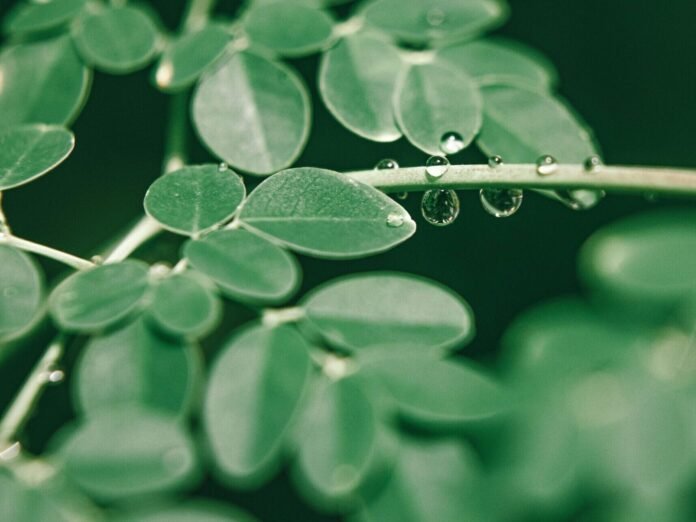We planted two trees when we opened Organic Select on Francia Street in Versalles. Of course, that was 10 years ago when Versalles was a slower-moving colonia with single-family homes and gardens. Those trees were Moringa and Neem stuck in truck tires painted green to let the community know we have opened our doors.
Those two are mature trees entwined with Arnica, surrounded by flowering plants in brick planters. Meanwhile, high-rise condos are popping up, while Organic Select remains a Green Zone for birds and bees.
Yes, we have the splendid advantage of growing Moringa trees in our area. These graceful trees embellish our avenues and colonies. They grow fast and produce an abundance of medicinal material. You can plant a seed and expect a good-sized tree in less than six months and a crop of their powerful seed pods in a year.
Native to India, this tropical-loving tree outweighs the health benefits of green tea. That’s why we place Moringa in line with the top superfoods.
For thousands of years, Moringa oleifera has been praised for its health benefits. It is rich in healthy antioxidants and bioactive plant compounds.
The leaves are an excellent source of many vitamins and minerals. One cup of fresh, chopped leaves (21 grams) contains the following:
- Protein: 2 grams.
- Vitamin B6: 19% of the RDA.
- Vitamin C: 12% of the RDA.
- Iron: 11% of the RDA.
- Riboflavin (B2): 11% of the RDA.
- Vitamin A (from beta-carotene): 9% of the RDA.
- Magnesium: 8% of the RDA.
- 46 antioxidants
- All the amino acids the body needs.
- And a lot of things they can’t identify; however, the ayurvedic (ancient healing wisdom from India) have known of Moringa’s curative powers for thousands of years.
Compared to the leaves, the pods are generally lower in vitamins and minerals.
However, they are exceptionally rich in vitamin C. One cup of fresh, sliced pods (100 grams) contains 157% of your daily requirement for vitamin C. (note, this detail is used as a measure of comparison, not to be eaten.)
People use them to combat cancer and take them like medication, one pod at a time, three times a day. They contain seven times the Vitamin C as oranges, improve sleep, triple the potassium of a banana, produce energy, fortify your immune system, alkalize the blood and digestive system, control blood sugar levels, help weight control, lower cholesterol levels, and improve memory.
Moringa is rich in omega 3, 6, and 9, contains 36 anti-inflammatory components, and alleviates pain in muscles and joints.
We like that it grows like crazy around Vallarta, thriving in our pocket of tropical habitat. We took a few up to San Sebastian (much to the objection of my partner, also a tropical breed), where, sorry to say, they suffered through the winter, just barely adapting to the cold nights in the mountains. Clearly, not thriving. We got a few flowers and seedless pods.
Here’s the story…
In my wandering days, I asked one of my herbal teachers if there was a general rule to herbal remedies that applies to anywhere you find yourself. He was a German doctor living in Bogota, Colombia, as was I. “Find a thriving flowering plant, use the leaves and flowers in an infusion to heal yourself. The color of the flower is the guide, such as yellow flowers for digestive issues, white for lungs, red for heart, blue for kidneys, etc. The flowering plant has the healing energy you lack. The flowering plant is at the height of its energy and adaptation to the area. This energy will heal you.”
I tested this theory while on the coast of Colombia in a then small village called Santa Marta. We were staying in a rustic hotel on the beach when I came down with some awfully hateful stomach cramps and etc.
Next to the hotel was an empty lot with a fluffy bush full of yellow flowers. Swiping a handful, I turned them over to the kitchen and asked them to brew up some tea. They, in turn, laughed and said I would poison myself. It tasted bitter and astringent, but as soon as it hit my stomach I felt better, and all the symptoms stopped at that moment.
So there you have it. Look out for that Moringa tree, which is flowering and podding up now. You can also find it dried in the local health food stores or nip some from the trees in front of Organic Select. The taste of the tea is not bitter or aggressive, but rather green and golden.



